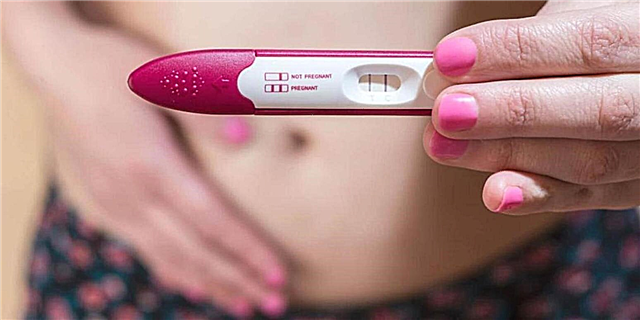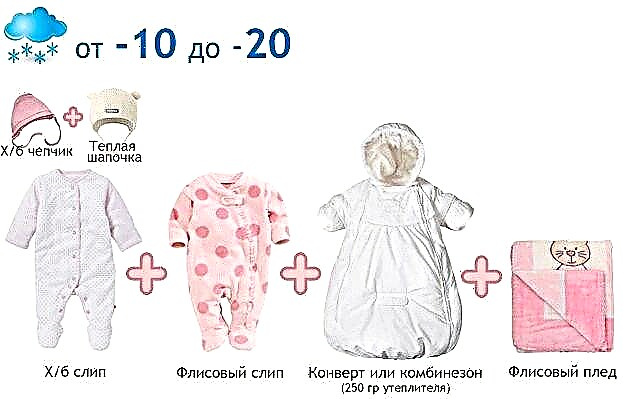Newborn boys and girls cannot explain how they feel and show where their pain is. Often, in addition to examining doctors, it is required to pass tests to clarify the condition of the babies. In particular, the study of feces helps to assess the functioning of the digestive system. There are general guidelines and rules regarding the collection of material for research.

Baby
Why is stool analysis done?
Stool analysis is part of a study aimed at identifying malfunctions in the crumbs' body, while searching for foci of inflammation. It is usually prescribed when the baby has problems with digestion, they are manifested by upset stool and anxiety. You can suspect something was wrong by the appearance of the feces, especially if they contain foam, mucus, blood and an unpleasant odor.
Also, stool analysis helps to identify parasites living in the baby's intestines. Children most often have pinworms, which cause itching and redness of the anus. They reproduce at a tremendous speed, in the evenings the females crawl out of the anus, laying eggs. As a result, the child has discomfort.
Coprology, or general fecal analysis, is prescribed for a number of symptoms:
- nausea, vomiting;
- yellowing of the skin, whites of the eyes;
- blood in the stool;
- bloating and pain in the abdominal cavity;
- a sharp decrease in appetite and weight loss;
- change in consistency, color, odor of feces.
The study will allow to establish how the digestive system functions, whether there are foci of inflammation, whether food is being digested. The analysis determines if there are enough enzymes needed for the organs to function. He also makes it clear if there is hidden blood. If the result is positive, then an additional analysis is prescribed, which will already reliably indicate the presence or absence of internal bleeding. At the same time, the indicators of a general blood test change significantly, which is always referred to if inflammation is suspected.
A carbohydrate test allows you to determine if your baby is lactase deficient. In this case, the stool is usually liquid and foamy. It can be both frequent and too rare. Parents usually have to help their child to go to the toilet.

Relief for constipation
Correct preparation for the analysis and delivery on time will help to establish the cause of the child's ailments. Only a doctor, pediatrician or gastroenterologist can decipher the results.
Note! Indicators alone are not the basis for a diagnosis. The well-being of the child is important, which is assessed by the doctor during the examination.
Feces collection rules
It is necessary to prepare for the analysis so that the results are the most reliable. They will help prescribe the proper treatment and eliminate unpleasant symptoms in the baby.
Preparatory stage
Before the collection procedure, you need to prepare a sterile container:
- Special containers for stool are sold. They are sealed in a bag, which does not need to be opened in advance. It easily unscrews the lid, which has a spoon for collecting material. The container is slightly smaller than a urine cup. It can be purchased at any pharmacy;
- If it is impossible to buy a container, you cannot use paper containers, match boxes. They will change not only the consistency of the material, but also affect its properties. In addition, they cannot be washed, therefore it is difficult to call them sterile. When there is no plastic container, it is allowed to use a glass one. You can use a jar of baby puree by washing it thoroughly and sprinkling it with boiling water;
- For some analyzes, laboratories issue a special container, processed by them and brought to sterility.
If the child is undergoing treatment, then 3-4 days before the analysis it is necessary to exclude:
- laxatives;
- preparations containing enzymes and iron;
- rectal suppositories.
Otherwise, the result of the analysis cannot be considered reliable.
Note! In advance, you need to remove all means and drugs that regulate and change the function of the intestines.
Before collecting the analysis, the child needs to urinate. The stool should not be mixed. If this happens, you will have to collect the material again.
Where to store
It is better if the feces are delivered to the laboratory within half an hour. If the time is delayed, you need to keep the container tightly closed in the refrigerator. No need to put in the freezer. The optimum temperature is 2-4 degrees above zero.

Refrigerator
How much can you store
If a child goes to the toilet in the evenings, pediatricians allow stool storage until morning. Usually this is used before a general analysis of feces or a coprogram.
Some studies require keeping the material for no more than 2-3 hours, others - 12. It all depends on their purpose. Therefore, before collection, it is necessary to check with your doctor about the possible storage time. For example, feces for dysbiosis and parasites must be delivered to a medical facility immediately after collection. The most accurate result is provided by an analysis performed in the laboratory within 30-40 minutes.
Actions for constipation
How to collect feces for analysis in infants with constipation:
- Massage the tummy by lightly pressing with your fingertips around the navel. You can bend the baby's legs at the knees, doing something like a bicycle exercise. Also carry the baby in your arms, with your back to you. At the same time, keep his legs bent and press them to the stomach. It turns out that the knees are at the level of the crumbs' chest. These are the safest measures for babies, which can also be used for colic;
- Use glycerin candles. They do not contain medicinal ingredients that could interfere with the results. Their main action is muscle relaxation. For very young children, a candle is cut into pieces, you can take a quarter. At the same time, make sure that there are no sharp edges and places that can harm the baby. You need to insert a candle a few millimeters, it melts quickly and also works instantly. Even if glycerin is found in the analysis, the indicators necessary for the diagnosis will not be affected.
Important! Do not insert pieces of soap, cotton swabs smeared with cream or petroleum jelly into the baby's ass. It is also not recommended to use vent tubes. All of these methods are not helpful and can injure the child. Even a candle is not a desirable method. But, when the analysis is important, and the risks are justified, as a last resort, you can resort to them.
How to donate feces
It is better if the feces are collected in the morning on an empty stomach. If it is impossible to prepare the material at this time, one should not forget about the storage conditions. Feces in an airtight container must be delivered to the laboratory. Upon delivery, it remains closed. It is important not to forget to attach direction to analysis. Some jars have stickers where you can write the child's first and last name.

Containers
Others
Before the analysis, enemas and laxatives should not be used. The child must go to the toilet on their own. If you had to do an enema for a baby, then you should wait at least two days.
How to collect feces correctly
Correctly collected material is a guarantee of obtaining results that reflect the current state of the baby, and this is what is necessary for the appointment of the correct treatment.
Collection instructions
How to collect feces from a baby for analysis:
- You need to wait until the baby wants to go to the toilet by preparing a sterile container. It is important that this is precisely a spontaneous process. When the child does this at the same time, there is no inconvenience. It is often impossible to predict in advance, so you need to take a sterile container and wait;
- Usually babies go to the toilet after eating. If the baby is already a year old, he is sitting, then you can use the pot. Many mothers start toilet training from 6-7 months. The pot must be washed well and wiped dry. Collect the required amount of material with a spoon from the container and close the lid tightly;
- You can take feces from a diaper or diaper, but this must be done carefully, not scraped along the surface, so that the analysis does not contain unnecessary impurities.
How much feces do you need
You do not need to put as much material into the container as it will fit, 5-10 grams of feces is enough. This is approximately one teaspoon. Ideally, if his condition is semi-liquid, mushy. Such a chair should be normal in a baby.
How to collect liquid feces
How to collect liquid feces from a baby:
- You can drain it from the surface of the diaper. You need to be in time until it is absorbed. Immediately after defecation, remove the diaper from the baby and transfer the material to the container;
- It's good if you can put a clean oilcloth under the child, so that you can then drain it into a container from it. The main thing is not to use gauze or fabric sheets, otherwise particles of materials may appear in the analysis, which will affect its result.
There are special urine bags. These are disposable test bags. They are sold in pharmacies. Their adhesive base is fixed on the baby's skin. You can stick it to the baby's bottom, and then put on a diaper on top. It is necessary to ensure that the baby does not turn and turn too much, otherwise the contents of the bag will spill out.
Note! You need to make sure that no urine is included in the analysis. Otherwise, it is better to reassemble the material. Do not leave the urine collector for a long time - irritation may appear on the baby's delicate skin at the attachment point.

Urinals
Collection features for different studies
Collection and storage rules differ slightly depending on the study. There are requirements determined by the purpose of the analysis.
Coprogram
Coprogram is a frequently prescribed test for infants. Thanks to him, you can determine how the child's digestive tract, liver and biliary tract work. The study determines many indicators that characterize color, smell, texture, acidity. It also allows you to assess the presence of impurities, blood, mucus, starch, fat.
How to take a coprogram to a baby correctly:
- The material can be collected in the evening by placing it in a sterile container;
- Put in the refrigerator, store in the door. In no case in the freezer;
- Deliver to the laboratory tomorrow morning. Ideally, if no more than 12 hours pass between collection and delivery.
Worms
Before collecting an analysis for worms, do not wash the crumbs using baby soap or foam. If you need to determine whether the baby has pinworms, then the material is collected from the folds near the anus. You can do this with a cotton swab or attach a special adhesive tape to the priest. After that, the instrument is put into a bag or container and closed well. Usually, such procedures are carried out directly in medical institutions. They do not cause inconvenience and pain. The analysis is being prepared within half an hour.
It is believed that the most reliable result is obtained with a threefold delivery of feces. In this case, it is necessary to maintain an interval of 3 to 7 days. A blood test can also confirm the presence or absence of parasites. It is immediately necessary to deliver feces to the laboratory to detect lamblia, which periodically attack the child's body.
Note! To detect the eggs of parasites in the feces, it must be fresh, only harvested, still warm.
Hidden blood
Before taking an occult blood test, it is necessary to change the baby's diet. To do this, exclude the following foods:
- meat;
- fish and everything that contains iodine;
- iron-containing, for example, apples, peppers;
- green vegetables and fruits;
- buckwheat.
It is also better not to give your child foods that can injure the mucous membranes in the mouth, such as dryers and crackers. If the baby is breastfed, then the feeding of the nursing mother needs to be adjusted. Also, do not overuse meat, fish and foods with iron.

Baby on the guards
For children of "artificial" a lot depends on the composition of the mixture. It is necessary to carefully study what trace elements are contained in the baby's diet. If high iron content is noticed, inform your healthcare professional. He will determine if this will affect the result of the analysis and, if possible, suggest an alternative. For example, transfer the baby to a different mixture. In any case, you should not make such decisions yourself. The diet should be continued for three days before the planned date of collection of material for analysis.
Bacteria
When it is necessary to determine the presence of bacteria and identify them, it takes about 5 grams of material. If there is mucus, blood in the feces, then they must be collected and placed in a container. Better that he be in the laboratory in two hours, no more.
Every mother is faced with the need to collect the baby's feces for analysis. Sometimes this has to be done urgently, but usually there is time to prepare for taking the material. It is necessary to approach this process responsibly, to know about the terms and conditions of storage, the principles of collection. Indeed, the result of the study depends on this, which means the treatment designed to alleviate the condition of the baby.



